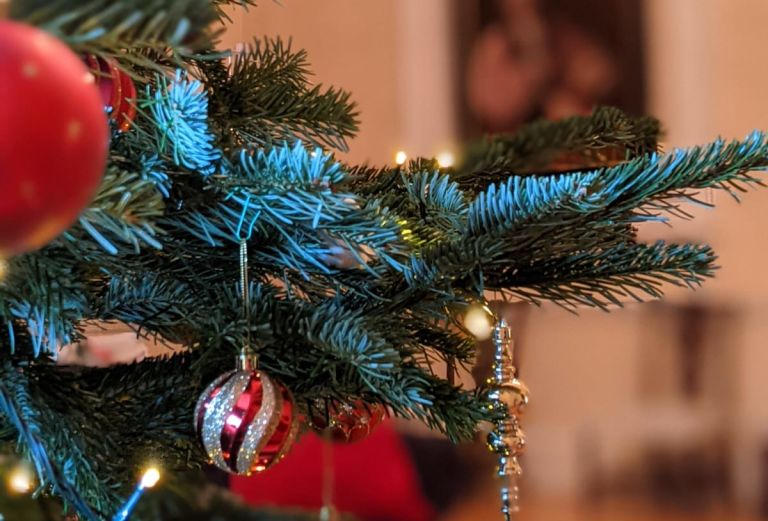
From kissing balls to Yule logs, discover the history of Christmas traditions throughout the ages!
Tudor Christmas tradition – the yule log
There is nothing better at Christmas than a warm, cosy fire!
The earliest documented references to Yule logs date back to the Tudor period (dates). The Yule log would be brought into the home on Christmas Eve and decorated with ribbons, branches, dried berries or other natural decorations found outside.
Once placed on the fire, the log was expected to burn from Christmas Eve until Christmas night – so it had to be big! Some traditions state the log must be large enough to burn for the entire 12 days of Christmas. Many believed that if the Yule log was to burn out before the end of Christmas, bad luck would follow.
Families would gather around and watch it burn as some believed their fortune and futures could be predicted by counting the sparks of the burning log!
After the Yule log had burned until the end of the festivities, it was important to keep some of the remains – these would be kept until the following year to help light the new log.

Georgian Christmas tradition – the kissing bough
Have you ever shared a kiss under the mistletoe?
Before there was the mistletoe there was the kissing ball! The kissing ball is also sometimes called a kissing bough. It is made from greenery such as pine, evergreen and mistletoe which is wound through a wooden frame, to create a ball shape.
Georgian Christmas was all about gathering with loved ones and celebrating. Kissing balls were hung in entrances and doorways to the home. When a visitor arrived, it was common custom for the host to embrace them with a kiss. If a kiss was shared beneath the kissing ball a berry was to be plucked from the ball. When all the berries from the kissing ball had been plucked, no more kisses could be requested. Some believe this is where kissing became affiliated with mistletoe!
Smooching under the kissing ball was not to be taken lightly! By the Victorian period, if a girl refused a kiss under the mistletoe, it was said that she would not be proposed to during the coming year. Many believed that a girl refusing a kiss under the mistletoe meant she would end up an old maid.

20th century Christmas tradition – baubles
Have you seen the baubles on our Palace Christmas trees?
Today we decorate our Christmas trees with many different items such as ribbons, fairy lights, tinsel, and baubles. In the early 1800s many people decorated their Christmas trees with fruits and nuts; apples were quite popular!
Hans Griener is thought to be the first person to create what we now think of as the Christmas bauble. Hans, a glassblower, lived in a small eastern German mountain town called Lauscha. As you now know, apples were popular decorations and in 1847 Hans created a glass blown apple to hang on his Christmas tree. Hans’ idea quickly caught on and soon the whole village was decorated with beautiful glass blown ornaments!
Word spread and an American businessman called F.W. Woolworth sought out the beautiful decorations created by Griener. Woolworth began importing large quantities of these decorations to America where they were an instant success.
The popularity of baubles grew and grew over the 20th Century with the increase in mass production of ornaments after World War II.